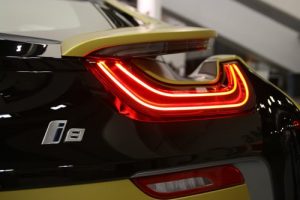Table of Contents
In the previous decade, there were a lot of predictions on what the future of the automotive industry holds. The majority of these predictions were quite accurate. People talked about rearview cameras as standard equipment, pedestrian detection and night vision, as well as the adaptive cruise control radar. About ten years ago, some of these technologies were still in the prototype stage; however, today they’re more than realistic and even widely used all across the globe. So, can we make a new set of predictions, one that spans into the next decade? What about next year? What high-tech features can we expect to start seeing as standard in the 2021 automotive industry?
1. Interactive windows
The question of infotainment is one of the biggest issues in the automotive industry of the early 21st century. The thing is that the installation of screens might not be as necessary, seeing as how windows may be enhanced with the AR technology in order to provide the ultimate experience. Toyota is amongst the first to experiment with this concept. Also, adding the interactive element to the windscreen instead of the dashboard can increase the overall safety of the vehicle. This is because the driver will be able to keep an eye on all the metrics while not turning their eyes away from the road.
2. Faster charging
One of the main cons that a lot of people have against electric cars is the fact that they (in their opinion) take forever to charge. This, however, doesn’t necessarily have to be the case. With the help of the ULEV (ultra-low emission vehicles) concept, the energy of the hybrid can be redeployed to the battery in order to reduce the use of fossil fuel. The ability to store energy is something that has been drastically improved over the course of the past years but the charging speed needs an improvement as well. This can be resolved with lightweight polymer fiber and carbon resin manufacturing.
3. Hybrid models are getting perfected
While on the topic of hybrids, it’s inevitable to mention the fact that vehicles like Subaru (2021 Subaru XV, to be more precise) might have a great year. This is one of the flagship hybrid models and definitely a flagship for Subaru. The bump in price is slight and the facelift of the model is quite moderate. In other words, it generates great value for its cost. Most importantly, the availability of online part manufacturers like Perrin allows for easy tuning and styling of the vehicle, which is yet another potential high-tech upgrade.
4. Amazon Alexa
Voice control is a feature that’s been huge in the past several years. It was about time to introduce this concept to the automotive industry. Similarly to the interactive windows technology, this will allow you to use all the functions of your vehicle without having to remove a single finger from the steering wheel. Think about it, you’ll be able to follow all the metrics while looking at the road ahead and customize your playlist, fiddle with your multimedia or answer phone calls without having to use your hands.
5. The override system
When it comes to the idea of the machines taking over, the vast majority of people dread this concept with all their being. However, this is something that could result in a number of saved lives in the future. While driverless cars should be a matter of choice, what happens if a person behind the wheel suddenly becomes unconscious, has a heart attack or the person next to them starts acting erratically? In that scenario, the override would occur and keep driving the vehicle steadily until the situation resolves itself.
6. Biometrical development in Automotive Industry
In the iconic 1993 sci-fi action flick Demolition Man, we could see cars that were able to recognize the driver by their weight and fingerprints on the wheel. Needless to say, this could customize the vehicle in order to suit the driver. The rearview mirror, seat and some other factors usually have to be adjusted for every driver. If an automated car could recognize the person behind the wheel, it could technically do this in your stead.
As you can see, the main areas of focus are convenience and security. More often than not, car manufacturers are using advanced technology in order to create a scenario in which vehicles become more reliable, safer and more fun to use. With the help of AR and voice commands, the way in which we drive and the very concept of driving a car might evolve a lot sooner than we expect.




